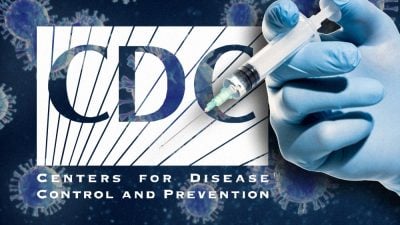More Than 10,000 Vaccinated People Catch Covid-19, Leading Many to Question if Vaccines Really Work

All Global Research articles can be read in 51 languages by activating the “Translate Website” drop down menu on the top banner of our home page (Desktop version).
Visit and follow us on Instagram at @crg_globalresearch.
***
The Centers for Disease Control and Prevention (CDC) said it has recorded more than 10,000 cases of so-called breakthrough infections. These infections involve people who contract COVID-19 at least 14 days after their final COVID-19 vaccine dose. The public health agency still insisted that such instances are “relatively rare.”
According to a Russia Today (RT) article, the CDC reported 10,262 instances of fully vaccinated people becoming infected with COVID-19. The figures published in the May 28 edition of the CDC’s Morbidity and Mortality Weekly Report came from 46 U.S. states and territories. Less than seven percent of those who suffered breakthrough infections were hospitalized with COVID-19 symptoms. Meanwhile, a total of 1.6 percent – or around 160 people – died as a result of these breakthrough infections.
The same RT report said it was “likely” that the number of breakthrough infections is much higher than reported. According to the CDC, this is because reporting of such breakthrough cases is voluntary. It also does not include asymptomatic COVID-19 patients who were never tested.
Despite the more than 10,000 cases of breakthrough infections reported, the CDC has insisted that these cases are “relatively rare.” The public health agency said: “The number of COVID-19 cases, hospitalizations and deaths that will be prevented among vaccinated persons will far exceed the number of vaccine breakthrough cases.”
The CDC announced early this month that it would limit monitoring of breakthrough cases. The public health agency said it would only report patients with COVID-19 vaccine breakthrough infection that were hospitalized or died. It explained that the move aimed to “help maximize the quality of the data collected on cases of greatest clinical and public health importance.”
CDC official Dr. Thomas Clark said in an interview that “few worrying patterns” in their collected data prompted the shift in reporting strategy. “I don’t think we’re missing out on this data. It’s just sort of a package of how we’re looking at these questions [regarding breakthrough infection,” he said. The CDC official added that other studies looking at the severity of COVID-19 infections in vaccinated and unvaccinated people are being planned.
COVID-19 tests also have a role to play in the increased number of breakthrough infections
The reverse transcription polymerase chain reaction (RT-PCR) test is the gold standard for COVID-19 testing. However, even its inventor Kary Mullis said that the test should not be used as a diagnostic tool. But a May 18 Off-Guardian report elaborated on how the CDC makes use of RT-PCR test data to paint COVID-19 vaccines as effective. (Related: Evidence emerges that COVID tests are faulty. FDA and CDC admit as much.)
According to the report, the CDC used two main factors to justify the purported effectiveness of vaccines. First, it altered the cycle threshold (CT) values of the PCR test for COVID-19 – which was unreliable to begin with. These tests were then manipulated to reflect a high number of false positive results.
Second, the agency made use of the broad definition of COVID-19 cases. According to the current definition, anyone who shows a positive test result even though they have no symptoms at all is automatically considered a COVID-19 case.
The article also alleged that the public health agency made two new rules for vaccinated and unvaccinated cases. First, it removed asymptomatic or mild infections from the definition of a COVID-19 case – which the agency announced early this month. This meant that vaccinated people who experience COVID-19 with little to no symptoms will no longer be considered COVID-19 cases.
Second, the CDC lowered the CT value of RT-PCR tests from suspected breakthrough infections. A late April 2021 update on the agency’s website instructed state health authorities to “submit only specimens with a CT value of [less than] 28 … for sequencing.” It continued that sequencing is not feasible with specimens that have a higher CT value. This essentially meant that the CDC suggested laboratories to lower CT values to 28 cycles or less for potential breakthrough infections. (Related: Vaccinated people now being tested at 28 PCR cycles, which almost guarantees a “negative” covid result.)
The Off-Guardian article ultimately remarked that the CDC’s new policies “effectively created a tiered system of diagnosis.” It said: “From now on, unvaccinated people will find it much easier to be diagnosed with COVID-19 than vaccinated people. If the new rules are applied, the only possible result is that the official records will show that COVID-19 is much more prevalent among the unvaccinated. This is a policy designed to continuously inflate one number and systematically minimize the other.”
*
Note to readers: Please click the share buttons above or below. Follow us on Instagram, @crg_globalresearch. Forward this article to your email lists. Crosspost on your blog site, internet forums. etc.
Featured image is from Vaccine Injury News

